Excluding rodents from our home offers a far more permanent and environmentally friendly manner in which to deal with our unwanted rodent visitors. Generally, when we are confronted with a rodent influx, we want them gone and we want them gone quickly. Reaching for a box of rat poison has become almost second nature to us. However, it is not environmentally friendly and as importantly, it is not a long term sustainable solution.
When making the decision to exclude it is worth remembering that there are many ineffective approaches employed within the pest control industry. For example, using spray can foams alone - without the inclusion of impervious stainless steel or copper wool - is one of the worst techniques for excluding rodents from buildings, yet the approach is very common among facilities managers, pest control operators as well as homeowners.
The key areas addressed in rodent exclusion are:
Eliminate potential harbourage
- Rats and mice need a place that offers them warmth, shelter and somewhere to make a nest and produce young - lots of them. Reducing and eliminating the availability of accessible spaces is a priority in exclusive rodent control. Ceilings, garages, sheds, pool pumps etc., all offer essential harbourage to your rodent tenants. However, preventing access to these spaces is often easier than one may think.
- Below is a summary of minimum gap sizes required for common household species.
| Summary of maximum gap sizes for excluding various pests |
| BATS |
Chiroptera spp. |
6 mm |
Greenhall & Franz, 1994 |
| MICE |
Mus musculus |
6 mm |
Greenhall & Franz, 1994 |
| RATS |
Rattus norvegicus, R. rattus |
13 mm |
Corrigan, 1997 |
Rodent exclusion by design
- To effectively manage rodents, it is important to consider what, other than food, water, and potential harbourage makes a building “attractive” to them. Creepers growing up the walls quickly become rodent highways to and from access points into the ceiling. Plants and shrubbery planted against exterior walls are ideal areas for rats to find concealment and protection from the elements. Trees proximal to the house will, in time, have branches that touch the roof or walls which will act as rodent corridors. Addressing these areas results in permanent and sustainable rodent control.
- Poorly designed or poorly positioned compost heaps or refuse bins will quickly attract rodents to our homes. Non rodent proof bird feeders are one of the essential services required by a large percentage of our household rodents.
Book your site visit and consultation
Implementation
Pipes:
- Drainage pipes and gutters offer routes that rodents will commonly use to enter a ceiling or roof. By providing “cowls” on external pipes and guttering these potential routes can be excluded.

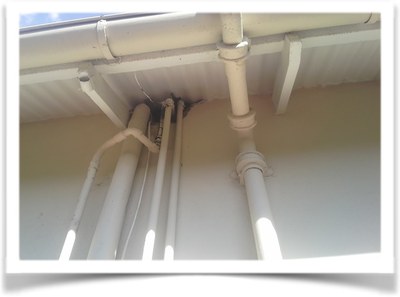
Flap valves or mesh on gutters.
- In areas of high rodent activity, the use of flap valves or mesh caps fitted at the end of guttering will prevent access to rodents. Mesh caps will require periodic cleaning.
Vertical pipes:
- In many cases where rodents are climbing the exterior of the pipe or guttering the application of a 30 cm band of glossy paint 120cm from the base of the pipe will prevent this behaviour.
Prevent rodent access beneath sheds, decks, and verandas
Use of metal mesh:
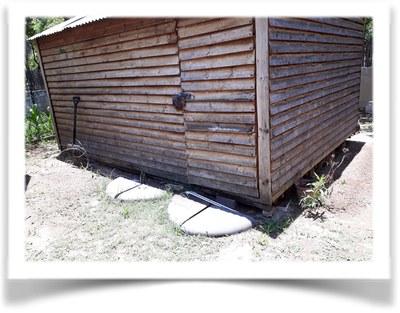 The spaces below our decks, garden sheds, and verandas are amongst the most sort out areas by rats within residential homes. They offer both shelter and warmth and are generally undisturbed. The exclusion of these areas with a fine mesh is an essential part of the rodent exclusion process. For this to be effective, the mesh should run vertically to just below ground level and then horizontally for at least 30 cm. To hide the exclusion material, a simple lattice grid can be inserted.
The spaces below our decks, garden sheds, and verandas are amongst the most sort out areas by rats within residential homes. They offer both shelter and warmth and are generally undisturbed. The exclusion of these areas with a fine mesh is an essential part of the rodent exclusion process. For this to be effective, the mesh should run vertically to just below ground level and then horizontally for at least 30 cm. To hide the exclusion material, a simple lattice grid can be inserted.
Walls: Holes or joints in exterior or other cavity walls.
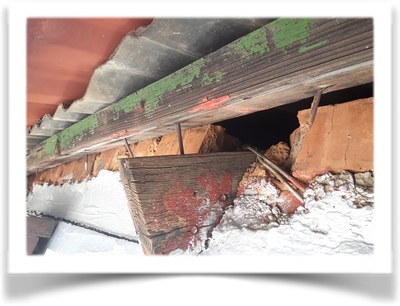
- All holes or joints in exterior walls with a gap larger than 6mm should be sealed to exclude mice. Larger holes will require mesh or cement in order to prevent rodent access.
 Doors:
Doors:
- External doors that have a gap between the door and the threshold exceeding 6mm, should be fitted with door sweeps.
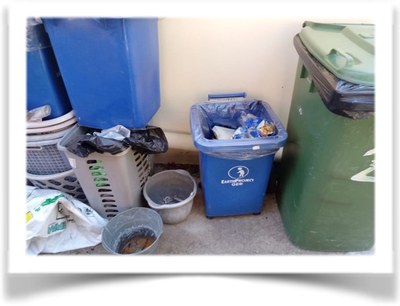 Refuse areas:
Refuse areas:
- Waste disposal areas are always highly attractive to rodents. Wheelie bins and other refuse containers should be well sealed and should ideally be placed on a concrete floor. Bins should be placed at least 60 cm from external walls and should be cleaned regularly. In cases where Wheelie bins are kept in an outside room or courtyard, the entrance door should be rodent proof. All plants and shrubbery around the waste area should be removed.
Book your site visit and consultation
Ceilings
Rodent dropping in ceilings act as a confidence cue to other rodents. The presence of rodent droppings and urine encourages other rodents to explore the area. We suggest the vacuuming of ceiling spaces before each winter to make sure that there are no rodent droppings before the winter rodent demand for warmth and nesting sites. Take a look at the before and after picture below:
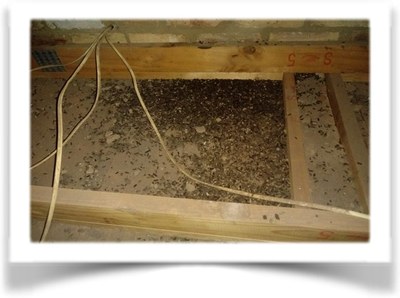
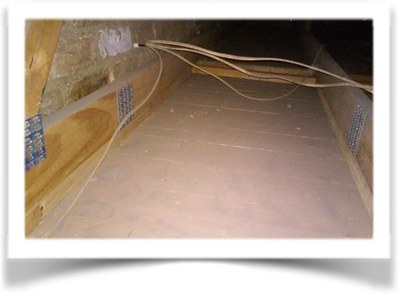
Landscape:
The landscape of your garden is one of the key areas relating to effective rodent control. Often, by implementing a few simple changes, you can dramatically reduce the number of rodents around your home.
Tree branch maintenance:
- Maintain at least 2 metres of clearance between exterior walls and tree limbs/branches that might provide rodent access.
Landscape plants that are attractive to rats:
- Avoid planting ivy, jasmine, honeysuckle or bougainvillea on fences or buildings as they provide shelter and food for rats. Dense ground cover allows excellent protection and corridors for unwanted rodents to move freely around your garden.
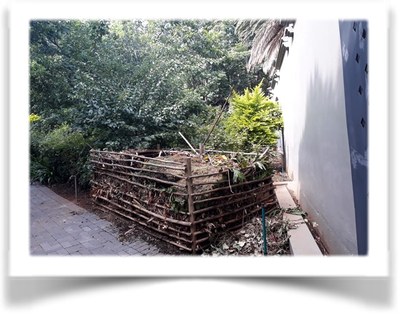 Compost heaps:
Compost heaps:
- Compost heaps provide both food and harbourage for rats. It is very seldom that we encounter a compost heap that is not home to a breeding family of rodents. Compost heaps can be made inaccessible to rats. EcoSolutions specializes in rodent proof compost management.
Book your site visit and consultation
In conjunction with the exclusion methods offered above by EcoSolutions, we additionally install and service 2 non-toxic rodent devices. These can be used to increase rodent control efficacy but should ideally be used to prevent rodents who wish to access the garden or buildings from neighbouring gardens when seasonal rodent numbers spike.Humane rodent trap:
- The Humane Rodent Traps are toxin-free, powered by a small recyclable canister of CO2, which will reset multiple times before needing replacement.
- As the rodent brushes the leaf aside to investigate a bait, the trap strikes the skull of the rodent with a steel-cored, glass reinforced polymer piston, killing the rodent instantly. Once the animal has been struck, the piston returns, dropping the rodent to the ground and resetting the trap immediately.
- This trap is designed for indoor and outdoor use and we currently have 300 traps installed nationally. These traps require a monthly service.
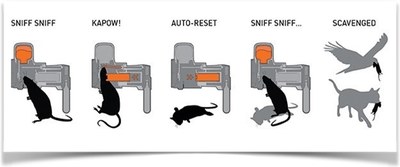
- Please feel free to watch the video here.
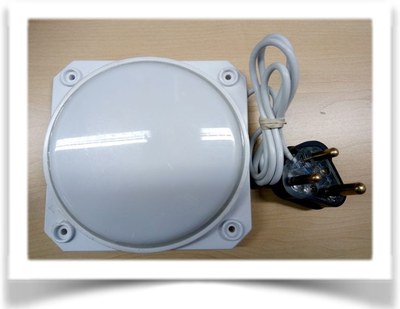 Rodent Flasher®:
Rodent Flasher®:
- The Rodent Flasher® is an EcoSolutions patented product. The Rodent Flasher® works as a result of a physiological response by rodents to an intermittent strobe light. The variable strobe light forces the rodent's pupils to dilate and then contract, making it very uncomfortable and forcing them to leave garages, sheds and ceilings.
- The Flasher® is installed in any room or ceiling where rodents have found harbourage. The light requires a power source and can easily be moved between ceilings and rooms where rodents occur.
References:
- Pest Prevention by Design: Authoritative Guidelines for Designing Pests Out of Structures. Chris A. Geiger, Ph.D & Caroline Cox, MS
- Richman, Tom, Patric Dawe, Jennifer Worth, John Aldrich, Tom Quasebarth, Jeff Endicott, and Bruce Ferguson. “Start at the Source”. Bay Area Stormwater Management Agencies Association, 1999.
- “Rodent Exclusion Methods”. The University of Florida, February 18, 2008. http://www.extension.org/pages/8686/rodent-exclusion-methods.
- Scott, H.G. “Design and Construction: Building Out Pests.” In Ecology and Management of Food-Industry Pests. J. Gorham (Ed.), 331–343. Arlington. VA: Assoc. Offic. Anal. Chem., 1991.
- www.ecosolutions.co.za
- “Technical Guide No. 29: Integrated Pest Management (IPM) in and Around Buildings”. Armed Forces Pest Management Board, August 2009. http://www.afpmb.org/sites/default/files/pubs/techguides/tg29.pdf


 The spaces below our decks, garden sheds, and verandas are amongst the most sort out areas by rats within residential homes. They offer both shelter and warmth and are generally undisturbed. The exclusion of these areas with a fine mesh is an essential part of the rodent exclusion process. For this to be effective, the mesh should run vertically to just below ground level and then horizontally for at least 30 cm. To hide the exclusion material, a simple lattice grid can be inserted.
The spaces below our decks, garden sheds, and verandas are amongst the most sort out areas by rats within residential homes. They offer both shelter and warmth and are generally undisturbed. The exclusion of these areas with a fine mesh is an essential part of the rodent exclusion process. For this to be effective, the mesh should run vertically to just below ground level and then horizontally for at least 30 cm. To hide the exclusion material, a simple lattice grid can be inserted.
 Doors:
Doors: Refuse areas:
Refuse areas:



 Compost heaps:
Compost heaps:
 Rodent Flasher®:
Rodent Flasher®: